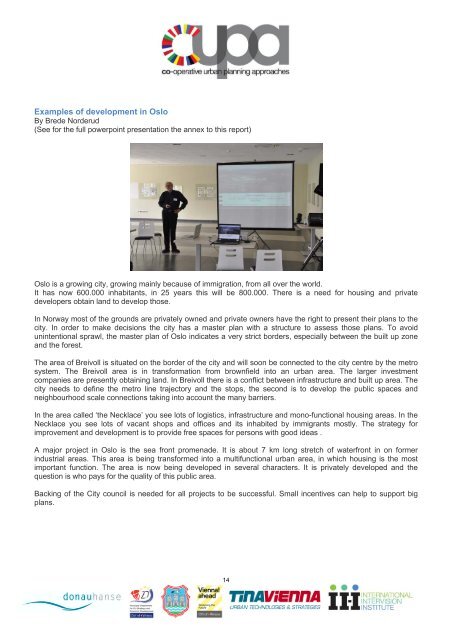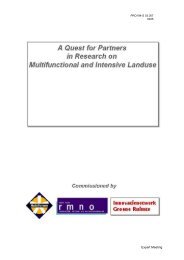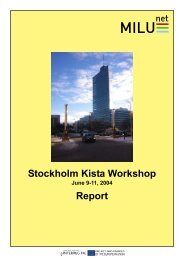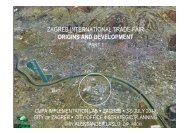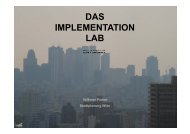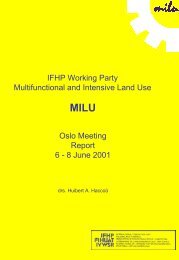IL-NOVI-SAD-report-2012-06-27.pdf - Iiinstitute.nl
IL-NOVI-SAD-report-2012-06-27.pdf - Iiinstitute.nl
IL-NOVI-SAD-report-2012-06-27.pdf - Iiinstitute.nl
You also want an ePaper? Increase the reach of your titles
YUMPU automatically turns print PDFs into web optimized ePapers that Google loves.
Examples of development in Oslo<br />
By Brede Norderud<br />
(See for the full powerpoint presentation the annex to this <strong>report</strong>)<br />
Oslo is a growing city, growing mai<strong>nl</strong>y because of immigration, from all over the world.<br />
It has now 600.000 inhabitants, in 25 years this will be 800.000. There is a need for housing and private<br />
developers obtain land to develop those.<br />
In Norway most of the grounds are privately owned and private owners have the right to present their plans to the<br />
city. In order to make decisions the city has a master plan with a structure to assess those plans. To avoid<br />
unintentional sprawl, the master plan of Oslo indicates a very strict borders, especially between the built up zone<br />
and the forest.<br />
The area of Breivoll is situated on the border of the city and will soon be connected to the city centre by the metro<br />
system. The Breivoll area is in transformation from brownfield into an urban area. The larger investment<br />
companies are presently obtaining land. In Breivoll there is a conflict between infrastructure and built up area. The<br />
city needs to define the metro line trajectory and the stops, the second is to develop the public spaces and<br />
neighbourhood scale connections taking into account the many barriers.<br />
In the area called ‘the Necklace’ you see lots of logistics, infrastructure and mono-functional housing areas. In the<br />
Necklace you see lots of vacant shops and offices and its inhabited by immigrants mostly. The strategy for<br />
improvement and development is to provide free spaces for persons with good ideas .<br />
A major project in Oslo is the sea front promenade. It is about 7 km long stretch of waterfront in on former<br />
industrial areas. This area is being transformed into a multifunctional urban area, in which housing is the most<br />
important function. The area is now being developed in several characters. It is privately developed and the<br />
question is who pays for the quality of this public area.<br />
Backing of the City council is needed for all projects to be successful. Small incentives can help to support big<br />
plans.<br />
14


